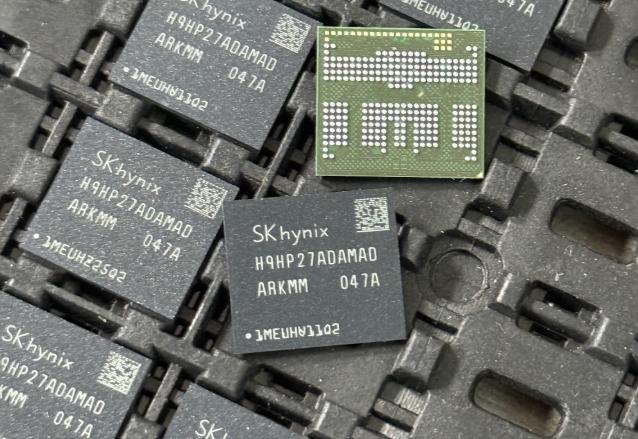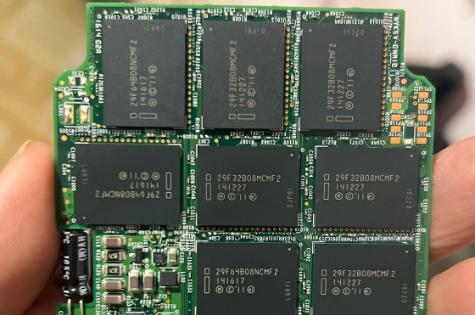Hello! now About Us
Spiral-Wound Expandable Casing 170-03090: An Innovative Engineering Component Unveiled
7/7/2025 2:44:45 AM
In high-tech sectors such as oil and gas exploration, geological drilling, offshore engineering, and chemical pipeline systems, casing stands as the cornerstone for maintaining wellbore or pipeline structural integrity, directly dictating project safety and economic viability. Recently, a novel component named Spiral-Wound Expandable Casing 170-03090 has emerged as a focal point of industry attention, thanks to its unique design principles and multifunctional applications. This article provides a comprehensive analysis of this groundbreaking product from four perspectives: technological principles, structural characteristics, application scenarios, and industrial value.
1. Technological Principles: Dual Innovation of Spiral Winding and Plastic Expansion
The development of Spiral-Wound Expandable Casing 170-03090 integrates two key technologies: spiral winding processes and mechanical plastic expansion techniques.
1.1 Spiral Winding Process
The casing is fabricated by helically winding metal strips (e.g., stainless steel, alloy steel) through hot expansion forming, creating a continuous helical line structure. This design endows the casing with three core attributes:
Uniform stress distribution: The helical geometry enables external pressure to disperse evenly along the spiral direction across the entire pipe wall, preventing localized stress concentrations that could lead to deformation or rupture.
Dynamic adaptability: The spiral structure allows the casing to maintain wall continuity during radial expansion, mitigating risks of tearing or fracturing inherent in conventional expandable casings.
Customizable production: Parameters such as winding angle, strip thickness, and pipe diameter can be adjusted to precisely match dimensional and strength requirements across diverse engineering scenarios.
1.2 Mechanical Plastic Expansion Technique
The casing incorporates an internal expansion cone device. Hydraulic or mechanical force drives the cone axially, inducing permanent plastic deformation to achieve precise diameter enlargement. For instance, in oil drilling applications, the 170-03090 model can expand its outer diameter from initial dimensions to target sizes while maintaining uniform wall thickness, ensuring maximized inner diameter for subsequent drilling or production operations.
2. Structural Characteristics: Balancing Functionality and Reliability
The structural design of Spiral-Wound Expandable Casing 170-03090 embodies engineering elegance, featuring the following core components:
2.1 Hollow Cylindrical Body
The casing adopts a hollow structure with a helically wound outer wall and an inner wall smoothness ranging from Ra6.3–5.0μm, significantly reducing fluid transport resistance. In chemical pipeline applications, for example, this smooth inner surface minimizes media deposition, extending pipeline service life.
2.2 Expansion Component System
Expansion segments and claws: One end of the casing is equipped with multiple expansion segments, while the opposite end features uniformly distributed claw structures along its side edge. During expansion, the claws deform to engage with borehole walls, creating mechanical anchoring that enhances grip strength and resistance to axial pullout.
Skirt design: Certain models incorporate skirt structures at casing ends. These skirts bend and deform during installation, further increasing friction against borehole walls to prevent axial displacement in complex formations.
2.3 Material Optimization
High-strength alloy steels (e.g., API 5CT-compliant grades) or corrosion-resistant alloys (e.g., duplex stainless steel) are employed to ensure structural stability under extreme conditions such as high temperatures, high pressures, and corrosive media. In offshore oil projects, for instance, the 170-03090 model resists seawater corrosion and deep-sea pressures, extending service life by over 30% compared to conventional casings.
3. Application Scenarios: Enabling Technological Breakthroughs Across Industries
Leveraging its unique properties, Spiral-Wound Expandable Casing 170-03090 has achieved widespread adoption in multiple high-tech sectors:
3.1 Oil and Gas Exploration
Deepwell drilling: In the Tahe Oilfield sidetracking horizontal well project, the 170-03090 casing reduced upper wellbore diameters through expansion technology, cutting casing costs while maintaining production casing inner diameters for optimized hydrocarbon output.
Well rehabilitation: For corroded or damaged casing sections, the product serves as a liner for expansion-based patching, restoring wellbore integrity and extending production life. For example, Shengli Oilfield upgraded exploration-grade casings to production-grade standards using this technology, achieving only 5% inner diameter loss while supporting subsequent drilling operations.
3.2 Geological Drilling and Offshore Engineering
Complex formation stabilization: In fractured or collapsing formations, the casing expands to form temporary isolation layers, preventing borehole instability and ensuring drilling safety.
Subsea pipelines: The helical structure provides resistance to seawater erosion and biofouling, making it ideal for connecting and protecting deep-sea oil and gas transmission pipelines.
3.3 Chemical and Energy Pipelines
High-temperature/high-pressure transport: The casing withstands extreme conditions in refineries and nuclear power plants, ensuring long-term pipeline reliability.
Wear and corrosion resistance: Inner wall coatings (e.g., graphite, phenolic-modified epoxy resins) further reduce friction coefficients and enhance corrosion resistance, minimizing maintenance costs.
4. Industrial Value: Driving Technological and Economic Advancements
The widespread adoption of Spiral-Wound Expandable Casing 170-03090 has delivered significant technical and economic benefits:
4.1 Cost Optimization
By reducing upper wellbore diameters and casing layers, single-well costs decrease by 15–20%. For instance, in the Tahe Oilfield project, the 170-03090 casing achieved a record-breaking 437.22-meter deployment length in a deep sidetracking well, saving over RMB 1 million in material expenses.
4.2 Efficiency Enhancement
Expansion operations take less than half the time required for conventional cementing processes, eliminating the need for complex cement slurry systems and shortening drilling cycles. In Well TK6-463CH, for example, the transition from cementing to expansion was completed in just six hours-three times faster than traditional methods.
4.3 Safety Assurance
Mechanical anchoring and expansion sealing technologies improve collapse resistance by 40% and burst resistance by 25%, effectively preventing blowouts and collapses to safeguard personnel and equipment.
Conclusion: A Pivotal Component for Future Engineering
With its innovative technological principles, multifunctional structural design, and versatile applications, Spiral-Wound Expandable Casing 170-03090 has cemented its status as an indispensable engineering component. As material science and manufacturing processes continue to evolve, this product will play an increasingly critical role in frontier fields such as deep-sea development and unconventional hydrocarbon extraction, driving the global energy and infrastructure industries toward greater efficiency, safety, and sustainability.
Fudong Communication (Shenzhen) Group Co., Ltd., established in 2004, is a specialized global first tier semiconductor agent/distributor.
Fudong Mall is an online e-commerce platform belonging to Fudong Communication (Shenzhen) Group Co., Ltd. Fudong collaborates with global electronic component distributors and Chinese spot inventory suppliers.









